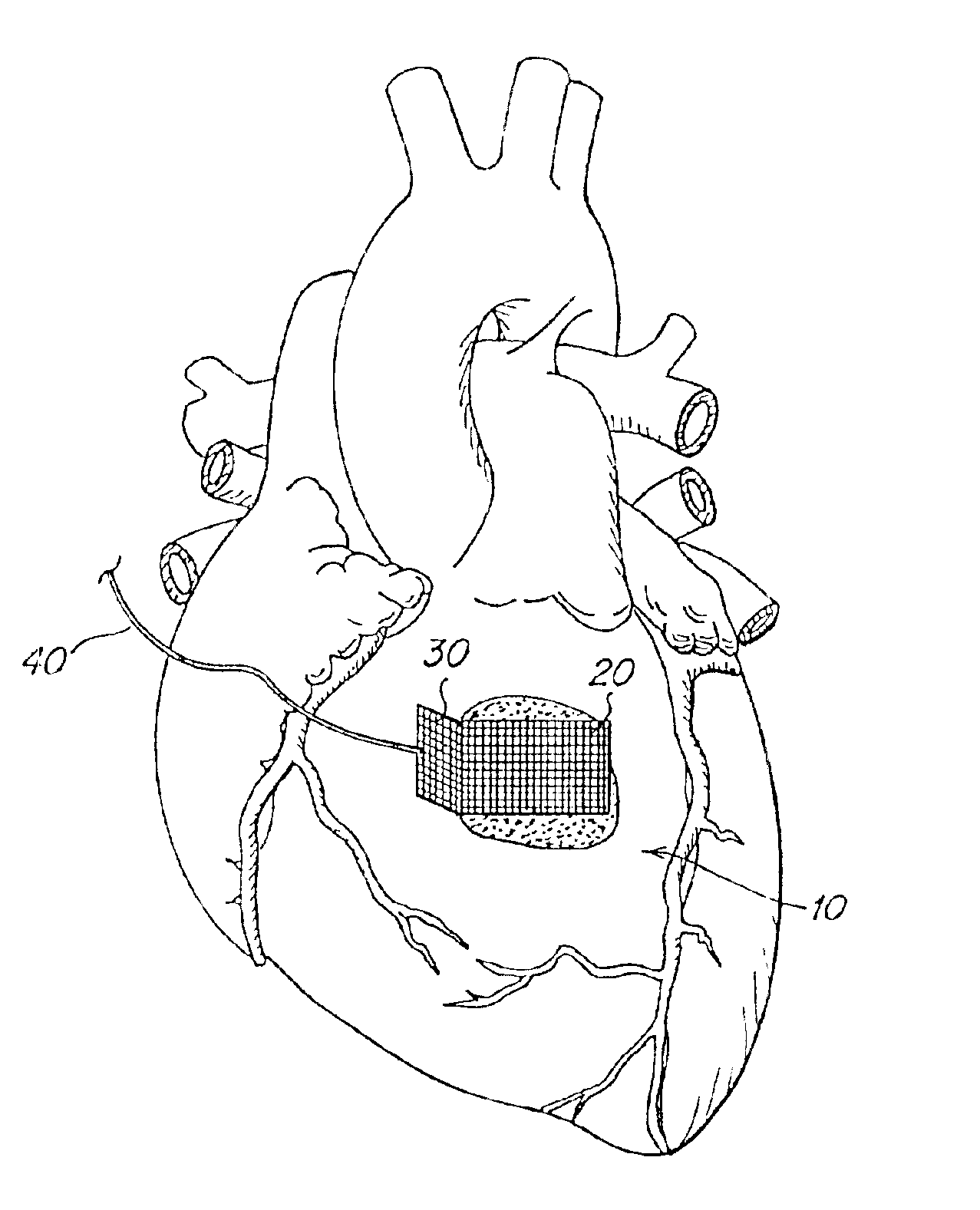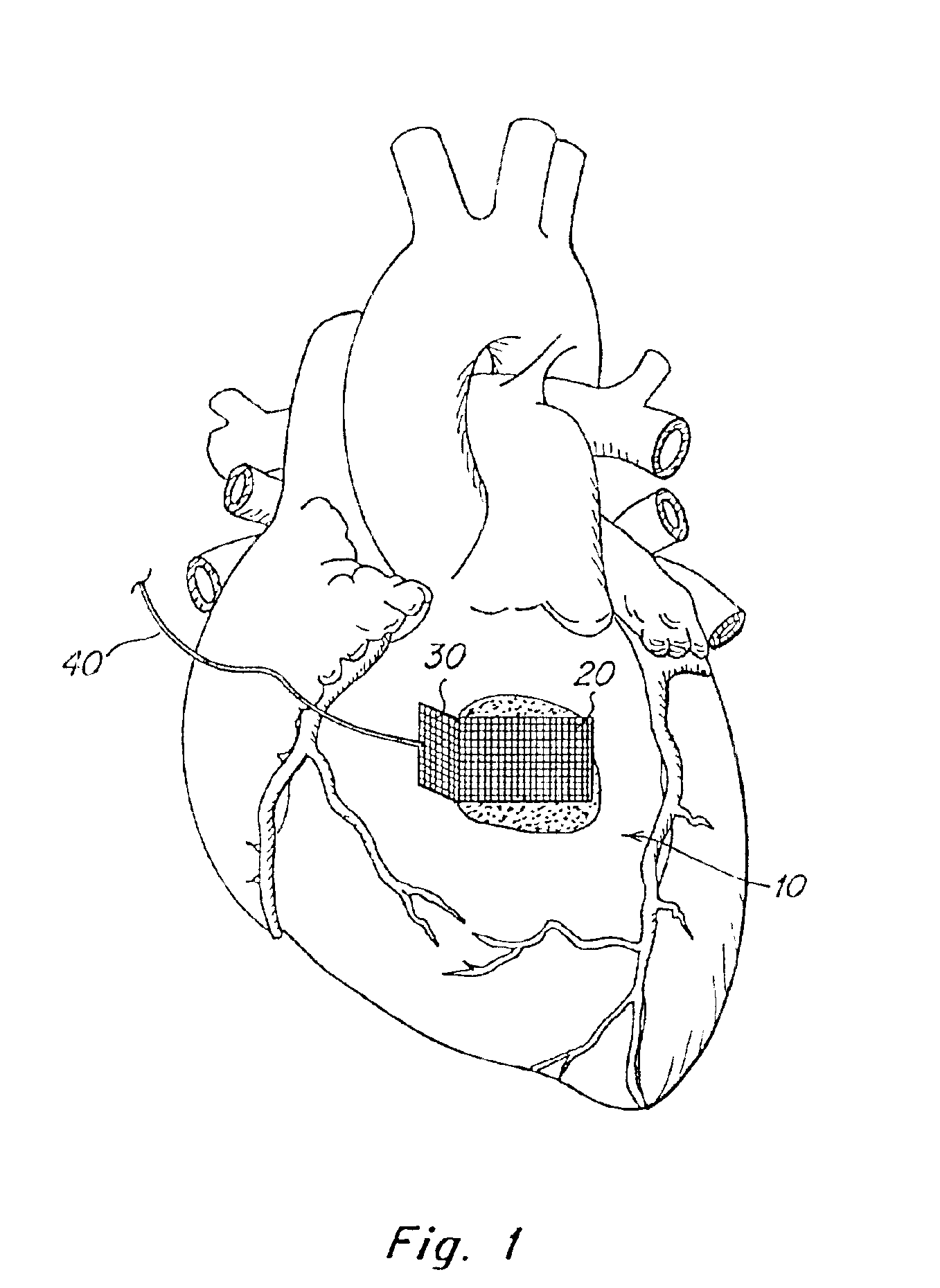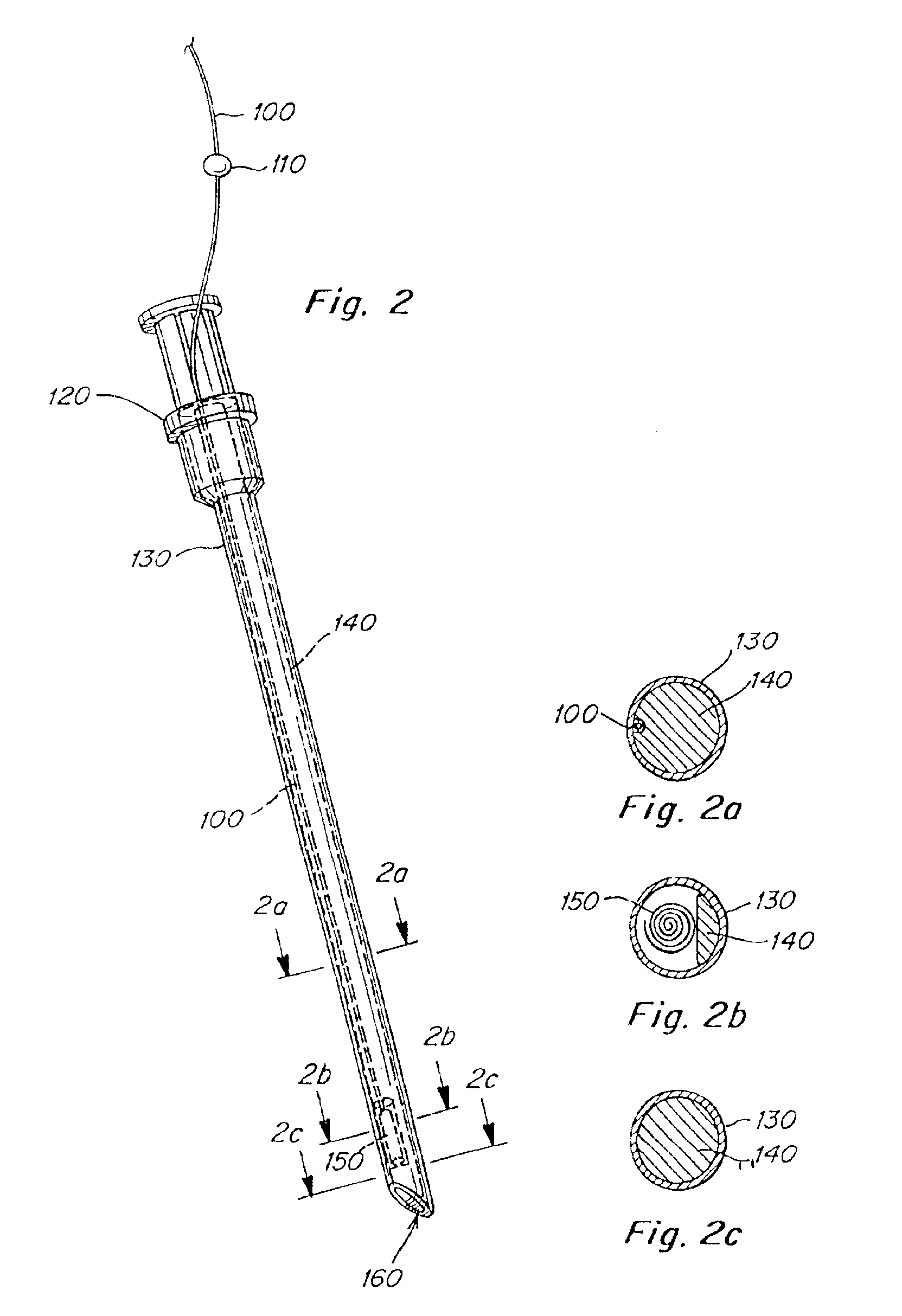Biodegradable tissue retractor
- Summary
- Abstract
- Description
- Claims
- Application Information
AI Technical Summary
Benefits of technology
Problems solved by technology
Method used
Image
Examples
example
[0062]The nature of the invention is clearly demonstrated by an operational example. The technique was used to manipulate the beating heart of a live dog. A primer solution buffered to physiological pH and containing 50 ppm Eosin Y, 0.10 M neutral triethanolamine (TEA) buffer, and 10% of a polymerizable macromer (which contained a polyethylene glycol backbone (3500 MW) with about 5 lactate residues attached, and endcapped with acrylic acid esters) was brushed onto a tissue-affixing article, specifically a 2 cm by 4 cm area of a 2 cm×6 cm polyester (Mersilene™) mesh patch, and also onto the epicardial surface of the LV apex of a beating dog heart that was exposed via thoracotomy. A layer of sealant prepolymer (20% 35,000 MW PEG with trimethylene carbonate linkages and acrylate end caps) also containing Eosin Y and TEA buffer were applied over the primer on the heart. The mesh was placed onto the coated tissue, and a layer of sealant was brushed onto the mesh / tissue surface. Two 20-se...
PUM
 Login to View More
Login to View More Abstract
Description
Claims
Application Information
 Login to View More
Login to View More - R&D
- Intellectual Property
- Life Sciences
- Materials
- Tech Scout
- Unparalleled Data Quality
- Higher Quality Content
- 60% Fewer Hallucinations
Browse by: Latest US Patents, China's latest patents, Technical Efficacy Thesaurus, Application Domain, Technology Topic, Popular Technical Reports.
© 2025 PatSnap. All rights reserved.Legal|Privacy policy|Modern Slavery Act Transparency Statement|Sitemap|About US| Contact US: help@patsnap.com



